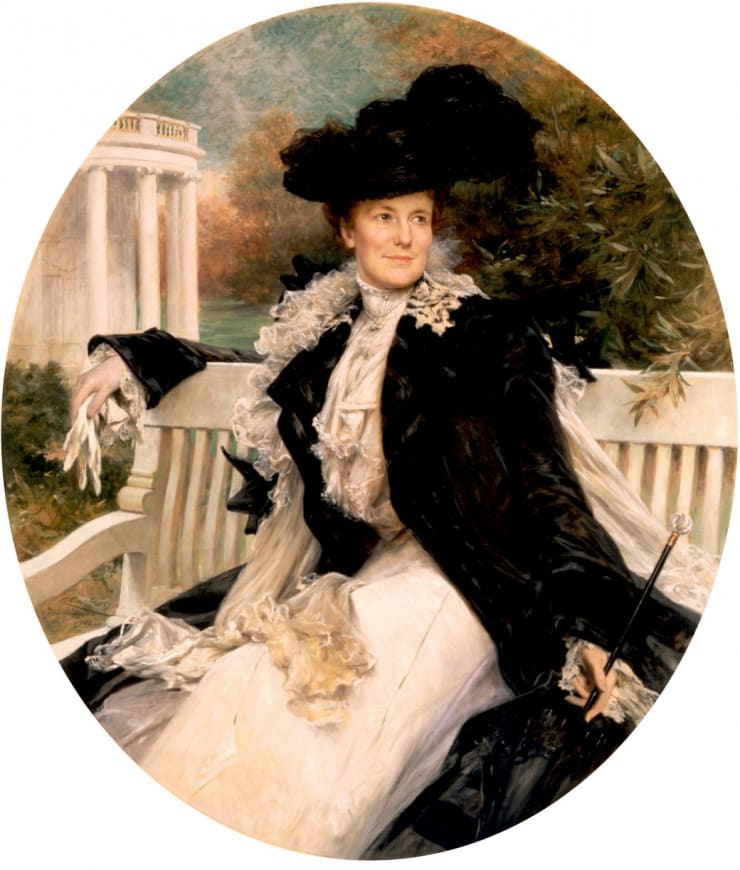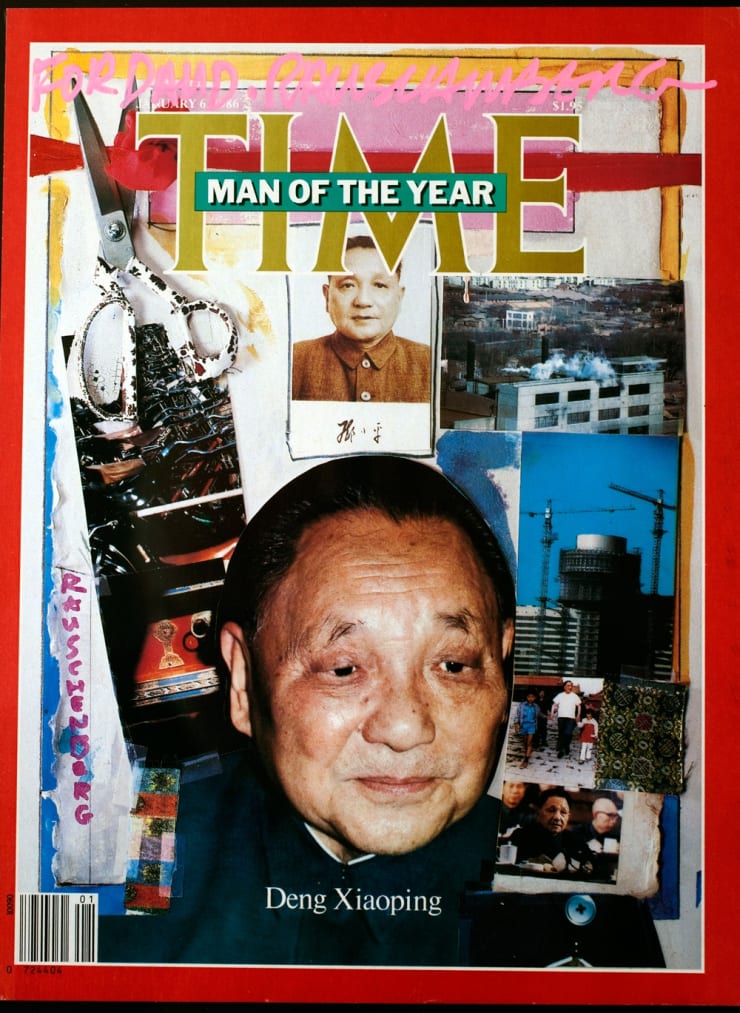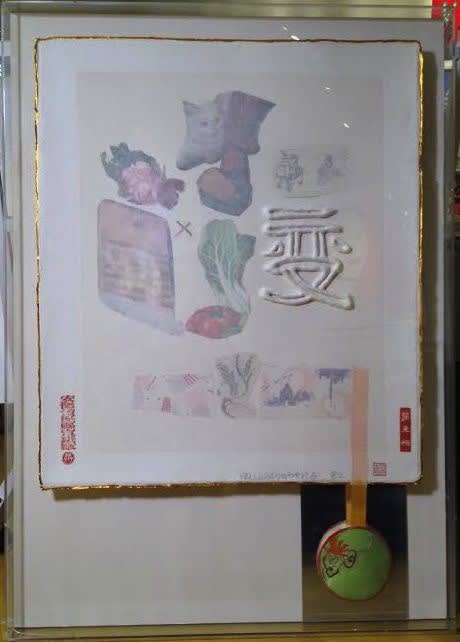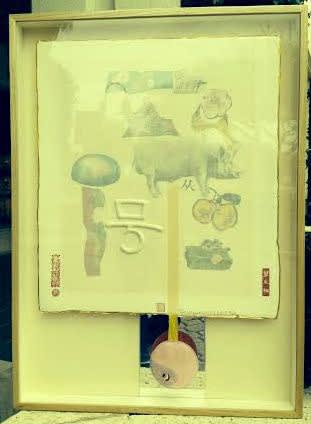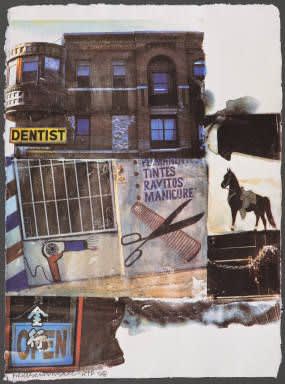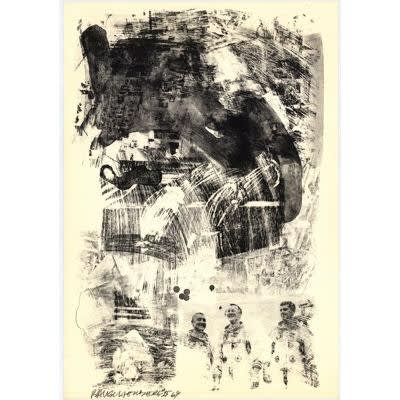In a bold and beautiful move, President Obama and First Lady, Michelle, have updated the look of the White House with contemporary art, including Robert Rauschenberg’s Early Bloomer. Done in inkjet pigment transfer on polylaminate, Early Bloomer, is predominantly red, white and blue, with an American flag draped in the foreground. It now hangs on the wall of the family’s dining room, replacing a portrait of Theodore Roosevelt’s wife, Edith. Early Bloomer is a gift to the White House collection from the Rauschenberg Foundation.
Rauschenberg said that he, “had given up on politicians” but he would probably have been tickled to know that Early Bloomer was adorning the walls of the White House. He said that is was, “up to the artists to wage peace.” To that end, he founded the Rauschenberg Overseas Cultural Exchange (ROCI) and traveled to countries around the world to share ideas with other artists.
In 1982, Rauschenberg traveled to China, where artists were pushing back against government control and restrictive party politics. His idea was to collaborate with the papermakers at the Xuan Paper Mill in Jingxian. Rauschenberg was detained by the government for several days, before they allowed him to actually go to the mill. His collaboration with the Chinese papermakers led to Rauschenberg’s creation of the Seven Chinese Character series. Two of the works from the series, Change and Howl are in the Vertu gallery at this time.
The series is made up of collages that represent seven Chinese characters. They are built on a base of thirty-ply paper and a layer of silk. Each character is in pulp relief, overlaid with thin, transparent paper. Rauschenberg finished each work by applying gold leaf and a cloth medallion.
Rauschenberg went to the United Nations in 1984 and spoke to over 100 diplomats and ambassadors about the vision he had for ROCI. He refused to sell any work when he was abroad, not wanting his project to perceived as a commercial enterprise, and supported ROCI by mortgaging his home on Captiva Island.
In 1985, Rauschenberg opened his ROCI show at the China National Art Gallery in Beijing, the first contemporary Western artist to have an exhibition in China. He payed for and installed the exhibit himself. The show included, not only the work he did in China, but also the work he did in while in Chile, Mexico and Venezuela. About 300,000 people attended the opening in Beijing. In 1986, Rauschenberg was commissioned to design a cover for TIME magazine, to celebrate Deng Xiaoping, who led China to become more open to global exchange.
Rauschenberg would have been 90 this October. The Pace Gallery, in Manhattan, is celebrating his birthday with a retrospective that includes some rarely seen works, and the Tate Modern will be hosting another Rauschenberg retrospective next year. Change, Howl and other great works by Robert Rauschenberg are available in our gallery.



